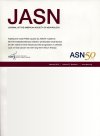Association of Longitudinal Trajectories of Systolic BP with Risk of Incident CKD: Results from the Korean Genome and Epidemiology Study
Although hypertension is a well known risk factor for CKD, few studies have evaluated the association between temporal trends of systolic BP and kidney function decline in persons without hypertension.
We studied whether changes in systolic BP over time could influence incident CKD development in 4643 individuals without CKD and hypertension participating in the Korean Genome and Epidemiology Study, a prospective community-based cohort study. Using group-based trajectory modeling, we categorized three distinct systolic BP trajectories: decreasing, stable, and increasing. The primary outcome was incident CKD development, defined as two consecutive eGFR measurements <60 ml/min per 1.73 m2.
Among participants with an increasing systolic BP trajectory, systolic BP increased from 105 to 124 mm Hg. During 31,936 person-years of follow-up (median 7.7 years), 339 participants developed incident CKD. CKD incidence rates were 8.9, 9.6, and 17.8 cases per 1000 person-years in participants with decreasing, stable, and increasing systolic BP trajectories, respectively. In multivariable cause-specific Cox analysis, after adjustment of baseline eGFR, systolic BP, and other confounders, increasing systolic BP trajectory associated with a 1.57-fold higher risk of incident CKD (95% confidence interval, 1.20 to 2.06) compared with a stable trajectory. There was a significant effect modification of baseline systolic BP on the association between systolic BP trajectories and CKD risk (P value for interaction =0.02), and this association was particularly evident in participants with baseline systolic BP <120 mm Hg. In addition, increasing systolic BP trajectory versus a stable trajectory was associated with higher risk of new development of albuminuria.
Increasing systolic BP over time without reaching the hypertension threshold is associated with a significantly increased risk of incident CKD in healthy adults.



